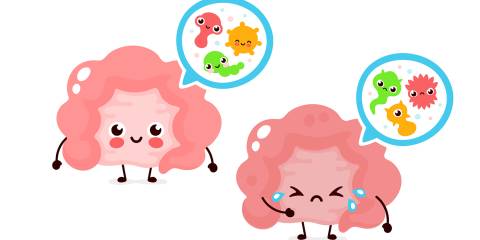Symptoms
Hyperventilation is a special form of anxiety attack that results in:
-
Feeling Short of Breath
Intermittently feeling like you can’t take a deep enough breath — even though you are taking a full breath. When this occurs, you are inhaling about 10 times as much air per breath as you would with a normal breath, but it feels like a tiny breath. If wheezing occurs with this, see Asthma.
-
Feeling of Impending Death
Though hyperventilation is NOT dangerous.
-
Numbness
Loss of sensation in your fingers, and sometimes all around your lips.
-
Occasional Dizziness
Causes
Hyperventilation is usually caused by buried anger or worry that then bubbles to surface during periods of relative calm (which is why it hits during driving, watching TV, etc. instead of during stressful events).
In predisposed individuals, it is caused by moving very large amounts of air in and out of your lungs (which is why it’s called “hyperventilation”). This washes out the “smoke” your body makes burning calories (i.e., the carbon dioxide). Too low a level of carbon dioxide in your blood triggers the symptoms.
Treatment
-
Therapies & Advice
-
See a Doctor Once
To be on the safe side, see your doctor once to rule out worrisome causes of the symptoms.
-
Breathe into a Bag
By breathing in and out of a bag (big enough to hold at least a few breaths), soon the carbon dioxide levels in the bag build up and will bring your blood carbon dioxide levels back to normal — no matter how fast or deep you breath . This often breaks the attack. Every so often add a breath of fresh air into the bag to replenish the oxygen.
-
Use Your Abdomen
A normal breath moves 1/2 quart (liter) of air. A full breath moves 5 quarts. When hyperventilating, you are taking full 5 quart breaths that feel like little breaths, and yet you sense you’d feel better if you could just take a little bigger breath. You can.
Most people breathe only by expanding their chest and not by letting out their abdomen. After you take a full breath, expand your abdomen out further and you’ll feel that more air enters your lungs. This simple technique can sometimes break the attack.
-
Mindfulness
Getting conscious of the feelings you’re burying, acknowledging them and releasing them is often very helpful (see 3 Steps to Happiness for more help). Sometimes they may even be very traumatic childhood or adult events and may need to be released in layers.
There are 2 simple techniques for this that are remarkably effective for quickly and easily releasing old stresses and phobias (and often even PTSD — see EFT, and the book Waking the Tiger, under online references below). They are so simple and easy, you won’t believe they could work so easily — till you do it!
-
-
Recommended Supplements
-
Herbal Anxiety Relief
A mix of natural therapies has been dramatically effective in treating anxiety — and actually increases energy and mental clarity!
-
More Information Online
- EFT – Emotional Freedom Techniques
- EFT – Emotional Freedom Techniques, Learn in 5 Minutes (YouTube video)
- Waking The Tiger — Healing Trauma (book on Amazon.com)





